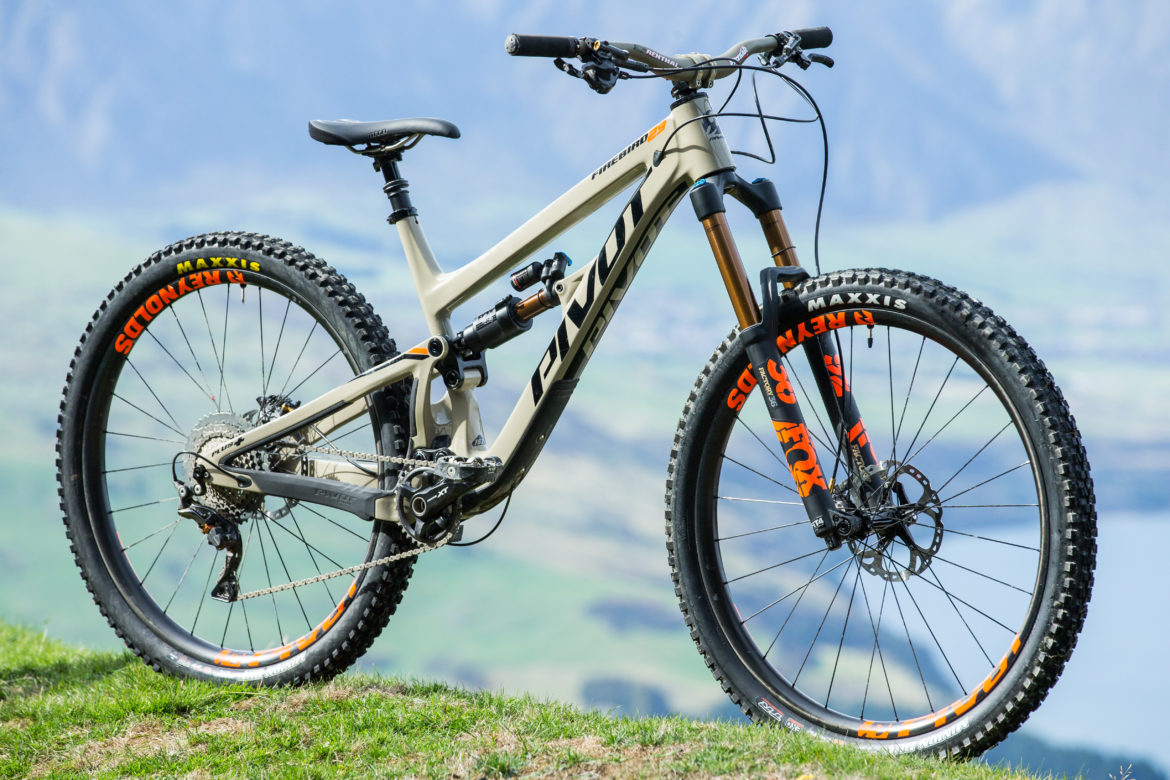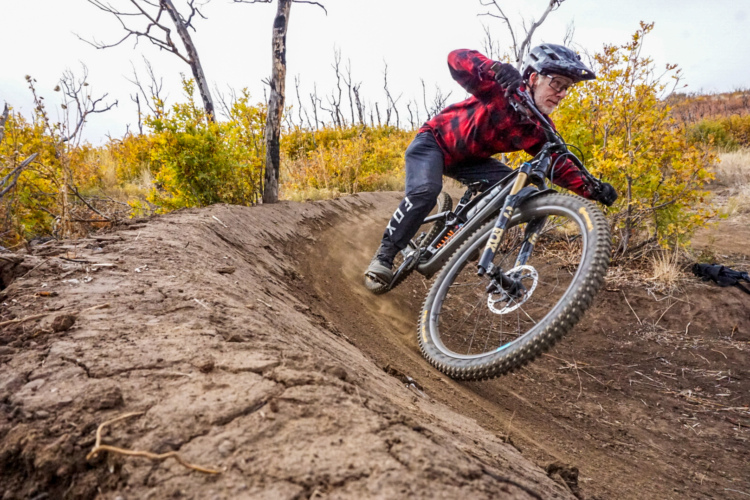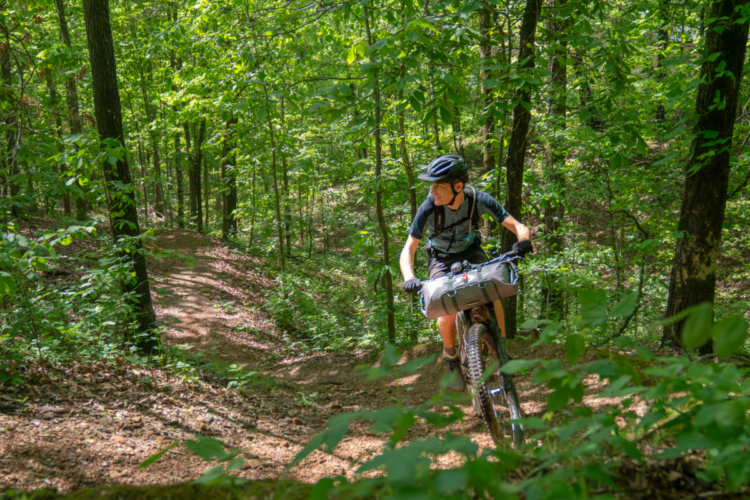
Whether the market calls it enduro or all-mountain, it’s clear this segment of mountain bikes is made for those who prioritize descending.
Enduro bikes are made to get riders to the summit so they can fly back down. At a minimum, an enduro-focused bike will have 140mm of travel in the rear, but 150mm to 160mm of travel is more common. A 160mm to 170mm fork is usually found on the front. With these numbers, an enduro bike may not offer the most comfortable, efficient, or enjoyable climbing experience, but if you’re only in it for the descent, then it doesn’t matter.
In a nutshell, the reach and travel on these bikes are long, the chainstays are short, and the head and seat tube angles are fairly predictable by now. If you’re lost already though, stay with me and we’ll dive into specifics.
Frame material

Mountain bike frame material considerations were covered exceptionally by Michael Welch in a recent Singletracks buyer’s guide for trail bikes.
When it comes down to frame material in an enduro bike versus a trail bike, there aren’t many differences. Carbon usually looks better and is and lighter, but not all the time.
Although it seemed like many brands were phasing out aluminum models completely a few years ago, the material has made somewhat of a comeback for budget models. Brands like Rocky Mountain and Transition brought aluminum models of their long-travel bikes into play and they offer a good value.
Other brands like Commencal and Guerrilla Gravity avoid carbon all together and are doing pretty well in terms of sales and even racing (see pro female racer Cecile Ravanel who wins most of the Enduro World Series rounds aboard an aluminum frame).
Let aesthetics, price, weight, and impact considerations guide you in a decision on the frame material as carbon is not inherently faster than aluminum and vice versa.

Geometry
Next to suspension travel, geometry is the biggest thing to look for in an enduro bike.
A slack head angle is standard for confidence in steep terrain while a steep seat tube angle is important so that the bike still has some climbing capability and keeps the rider’s weight centered and not too far back. A low bottom bracket height is important for center of gravity and cornering, and short chain stays are important for cornering and agility too.
Check out this article comparing the geometry of many of the most popular enduro bikes to get familiar with the numbers.

Average measurements these days are around 65-degrees for the head angle, 74-degrees for the seat angle, 432mm chain stays, and 342mm bottom bracket heights.
Personally, I’d predict that bikes in this category will get a little slacker, and a little longer, but I believe they will hit a point of diminishing returns soon.
If you’re looking for an all-mountain or enduro bike, you’ll be hard pressed to find a bike far off of these angles. If you do, it’s an outlier and I’d suggest diving into deeper research as to why the geometry is radically different.
Lastly, a lot of bikes in this category will have adjustable geometry and suspension. In one mode, it could be a degree steeper in the head angle and have less travel. By flipping a bolt or chip on the frame, it can slacken the head angle and increase the amount of travel available for the rear shock. This can be a useful feature, though seriously consider how often you might use this.
Suspension

We’ve talked about the travel lengths on enduro bikes, but there’s still a lot to cover when it comes to suspension.
The suspension platform makes all the difference in how the mountain bike will use it travel. And, surprise, Singletracks has an article on this as well.
Depending on the linkage and suspension platform, the bike will be on the more linear side, meaning it moves through its travel at a constant rate, or it will be more progressive, meaning that it’s supple at the top stroke, supportive at the mid-stroke, and harder to compress toward the end of the stroke.
Coil shocks on enduro bikes have gained popularity in the last few years also. Many riders are enjoying the benefits of a more consistent suspension feel that isn’t affected by the internal air pressure like an air shock, or affected by external elements like humidity and heat.
On the flip side, air shocks are lighter and easier to adjust and tune on the fly.

The cockpit

Cockpits on enduro bikes are fairly straightforward these days. Most 150mm to 170mm travel bikes are coming standard with 780mm to 800mm wide handlebars and 50mm length stems. The width of the bars is good for stability and center of gravity, and the short length of the stem is great to keep your body centered on the bike and for snappier handling.
On higher-end builds, carbon cockpits are more common. They save some weight, are stiffer, and can dampen vibration on the rider’s hands, but an aluminum cockpit works just as well at a lower price.
Dropper post

If an enduro-oriented mountain bike doesn’t have a dropper post, that might be a red flag. Enduro racing really popularized the dropper seatpost, so it’s really a must have. The good thing is that the technology has lowered in price dramatically since its debut, and droppers are almost standard at every price level.
Now, buyers have more choices than ever when it comes to dropper posts. There are budget-minded posts, several travel lengths, and a number of brands.
Pedals

Pedals can be a divisive point for mountain bikers, and going with clipless or flats often depends on the experience level of the rider. Newer riders prefer riding flat pedals a lot of the time because it’s less of a commitment than clipping in.
Experienced riders, on the other hand, recommend starting on flat pedals in order to better learn technique like proper bunny-hopping and bike handling before moving to clipless.
This decision will depend on the comfort level of the rider and there are benefits to both. Most enduro racers can be found running clipless pedals. The climbing advantages are contentious, but on high-speed, chunky trails, it’s nice knowing that your feet aren’t going anywhere.
Drivetrain and brakes

A major consideration when buying any mountain is the group set on it, and most likely it will be the biggest factor in determining the price point of the bike. Deciding on the build then depends on the budget of the buyer.
Usually the more affordable drivetrains, like a Shimano SLX or SRAM GX are just as dependable as the more expensive options, like a Shimano XTR or SRAM X01. The less expensive drivetrains just aren’t as responsive or light, and in some cases, may not offer as much range.
A more affordable drivetrain and brake set will work fine for most riders. If you’re thinking of getting behind a start gate for an enduro race though, a pricier group set can make a huge difference in efficiency and peace of mind.
Like any other category of mountain bike, buying an enduro bike is going to come down to your needs and budget. If you’re into racing, then it makes more sense to buy the build with a higher-grade suspension and drivetrain setup.
If you’re just getting started mountain biking and want a long-travel enduro bike to get down the mountain with comfort and style, then consider starting with a less expensive build and go from there.











1 Comments
Jul 9, 2018